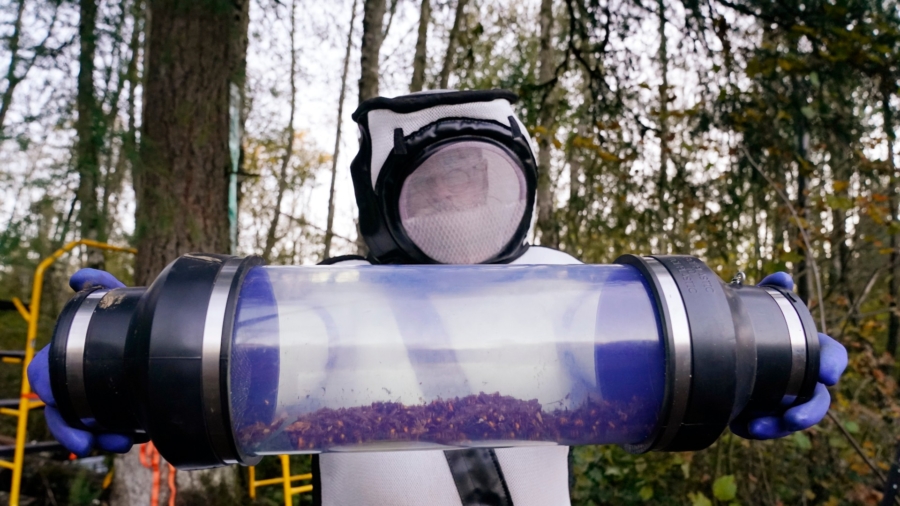Don’t expect to hear of Asian giant “murder hornets” or nests being captured in the coming months. The Washington State Department of Agriculture (WSDA) is taking down their Asian giant hornet traps for the winter.
Asian giant hornets either die off or hibernate in the winter, so the traps are being removed.
“This time of year the workers and the drones that may have emerged from a nest would be dying and the new queens would be overwintering,” WSDA spokeswoman Karla Salp told CNN. “This means the queens find a nice little hole in the ground and snuggle in for the winter.”
While WSDA may not be out actively looking for the world’s largest hornet, they will dedicate this season to planning for next year.
WSDA is actively assessing the traps it uses, working to build upon its large citizen trapping program and getting ready for the spring season when the queens could potentially emerge from hibernation.


Asian giant hornets are called murder hornets because a small group of them is capable of killing an entire honey bee hive in a few hours, the WDSA said. Multiple stings can also kill a human, according to experts at Washington State University.
Salp says while there is little chance you would see a live hornet this time of year, it is important to report dead ones.
“We would want people to report any sighting dead or alive of the hornet,” she said. “What a dead specimen would tell us is that they were in the area—we could potentially track in that area.”
WSDA is asking to continue to report any sightings here: https://agr.wa.gov/hornets
There have been several sightings of the Asian giant hornet in the state and Canada, according to WSDA, with the first-ever eradication of a nest in the United States occurring in October.
Entomologists from the Washington State Department of Agriculture (WSDA) eradicated and cleared out the nest found inside of the cavity of a tree near Blaine, Washington, on October 24. Inside, they found nearly 200 queens.
First discovered in Washington state in December 2019, Asian giant hornets are an invasive species not native to the United States. They are the world’s largest hornet, and they prey on honey bees and other insects.

